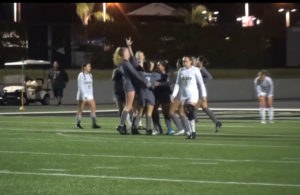- 2019/2020 Recap: Lady Scots Conquer First Round of CIF!
- 2019 Recap: Justin Flowe Wins the Dick Butkus Award
- Upland Lady Scots Have Their Revenge
- What is BBCOR?
- Tommy John, A Name To Be Feared
- The Game Plan
- Too Much Tackle?
- Is Cheer A Sport?
- Transgender Inclusion in Youth Sports
- Are You Counting Sheep Right?
International Youth Soccer Comparison
- Updated: September 12, 2014

How Do U.S. Youth Soccer Clubs Compare Internationally?
While the United States leads in youth participation in sports, the trend drops at age 14. On one side of the spectrum, some dispute that this is simply because basketball and football careers are rewarded with higher salaries and notoriety. However, this could also be due to the structure of our soccer programs for youth players. How do U.S. Soccer Clubs differ from others around the world? Tim Howard, the U.S. Goalkeeper, carried the U.S. team to great heights and a spectacular run due to his stellar performance. However, just one outstanding player is not enough to win a title. What did Tim Howard and the rest of the worlds’ soccer players do during their youth to make them the top-level athletes they are today? Lastly, what can our youth soccer programs do to promote this kind of internationally competitive play?
Elite soccer clubs in the U.S. and those internationally vary greatly. In the U.S., clubs train only three days a week, and college soccer programs for those aged 18-23 are only five months out of the year. However, internationally, such as in Europe, soccer clubs are far different; elite clubs train every day and the amount of training varies from age to age. On average, those aged from 8-11 train 2-3 weeks, those from 12-14 train 3-4 weeks, and those from 15-18 train 4-8 weeks. Consequently, it can be seen that internationally, the older the athlete is, the more time he or she must devote to training and soccer. Additionally, in the U.S. top players stay in their own age groups whose greatest assets are sometimes based more on their size and athleticism than footballing skill. In contrast, European soccer clubs encourage their students to consistently develop their ability and prioritize individual development over team development. Moreover, there is an emphasis on players to improve specific areas of their game. It also costs to play: $4000-8000 in the U.S. Academy League. Top players in Europe don’t pay to play.
In addition, the trainers of soccer clubs in the U.S. and internationally also differ to some degree. In the U.S., parents and managers determine travel and training as clubs seem either to have no vision for youth development or smaller budgets. This causes the players to lean on the individual coaches for support, unlike internationally, where trainers are extremely committed to the advancement of their players and their own profession. They are passionate about the sport as well; federations commit to developing players aged 17-23+. In the U.S., youth players are no longer connected with the federation once they are grown. Conversely, there are well-structured adult soccer leagues in Europe run by the federation for those 18-30. Other leagues allow those ranging from 10-50 to harbor their passion and enthusiasm for soccer whereas with the U.S. In the U.S., there is no club membership program for the players to stay connected when they leave for college. Rather, the program fades away into the Premier Development League and National Premier Soccer League, A-league and indoor teams.
Despite their many differences, international soccer clubs and those in the U.S. share several similarities as well. The essential and fundamental core of the game is the same in the U.S. and internationally regarding the rules. As for the abilities of the players, the U.S. is behind but not by a large degree. There are several positive aspects of U.S. Soccer Clubs as well. This is put into perspective by Dr. Gunster Karsten, author of “Soccer Smarts,” who says, “Looking at the abilities of the young U.S. soccer players, the U.S. is not far behind at all. Besides being technically ahead of German soccer kids, they seem to be also physically more developed –being stronger—and they use their body more for fights (maybe that is the influence of your very hard football sport, which does not really exist in Germany.”
All in all, US soccer clubs share both similarities and differences with other elite international clubs. Nevertheless, there are many areas to work on and ameliorate as soccer clubs are not enough. Soccer is played more internationally than in the U.S., where other sports such as basketball and football are more of the focus. There must be more ways to help develop American players’ love and enthusiasm for soccer. Like Mr. Karsten said, “If the kid himself or herself does not practice many extra hours alone, with friends or with [parents], there just does not exist enough dedication, passion, and love for this sport and one will stay an amateur their whole life.”
——————————————————————————————————————————–
Author: Kyle Zhu
Copyright © 2023 KSNN. All rights reserved.








